Journal of Alcoholism & Drug Dependence
Open Access
ISSN: 2329-6488
ISSN: 2329-6488
Research - (2021)
This profile of subjects affected by dual pathology with chronic consumption of toxic substances, presents, from the juridical-legal point of view, an incessant search for the drug (“craving”) and a pathological impulsivity (“acting-out”) that supposes a partial and/or significant rupture, rather than total, of the inhibitory mechanisms of behaviour, negatively influencing their cognitive abilities and, at the same time, their volitional-motivational abilities in the form of an emotional, toxic-induced outburst. It would be difficult for a legal practitioner to determine a complete defense as a modifying circumstance of criminal responsibility, solely on the basis of the aforementioned psychopathological diagnostic categories [1,2].
Impulsivity is a well-known and widely addressed phenomenon in the addiction clinic [3-5] so that impulsivity prior to drug abuse increases the susceptibility to relapse after abstinence [3]. Likewise, compulsive behavior would be characterized by the exacerbation of the traits of lack of premeditation and lack of perseverance; as well as the tendency to commit impulsive acts under states of discomfort or stress and it has been associated with indicators of severe consumption [6]. It is possible that this facet of impulsive behavior is more closely linked to neuropsychological dimensions dependent on affective feedback, for example, decision-making [7]. This could explain the possible pernicious influence to develop disorganized behaviors from the harmful influence of a pattern of use, abuse, and acute consumption of toxic substances.
The present case illustrates how cocaine craving and, therefore, the incessant search for the intoxicant - by the perpetrators - can reach the behavioral magnitude of criminal and delinquent behavior from the origin of potentially compulsive-aggressive and criminological behaviors (and in a vindictive way of "settling of scores") but developing disorganized and altered behaviors.
According to the wording of the sentence, and being by unanimity of the Jury, it was considered as proved that the pair of defendants (male and female, the latter being the one who maintained a sentimental relationship with the victim) went to the victim's home.
Once inside the house, and for unknown reasons, an argument began in the course of which, both perpetrators, in agreement to end the victim's life, tied his hands and feet in order to ensure the success of their action, grabbed him by the neck with the intention of strangling him and hit him with great force on the head causing a cranio encephalic traumatism, and left the house leaving him moribund.
As a consequence of the very serious injuries to the skull and, subsequently, to the brain parenchyma caused by the blows, the victim died in the Hospital.
At the trial and before the beginning of the presentation of evidence, the defendants acknowledged their participation in the criminal acts and that they shared interests in multiple drug use (toxico-philia).
In essence, the case is contextualized in the context of cocaine consumption and the incessant search ("craving") for this substance by the perpetrators, among other drugs. Whatever the motive for the discussion between the actors in the criminal scenario, the perpetrators felt frustrated at not having obtained the toxic substance they craved so much and decided to reduce the victim so that, later and out of revenge, they could take his life ("settling of scores").
Next, some images of the crime scene and the victim's autopsy are presented to illustrate the potentially hostile and aggressive behavioral consequences of subjects with cocaine craving. In this case, the perpetrators chose to engage in vindictive "score-settling" behavior of criminal magnitude.
From the reading of these images, not only the lack of hygiene and disarray of the owner's home is evident, but also the slovenliness of the crime scene suggesting disorganized behavior perpetrated by the perpetrators themselves. The latter may suggest or be compatible with the fact that such criminal conduct may have been deleteriously influenced by the chronic and addictive infiltration of toxic substances by the perpetrators, which would explain the disorganized conduct of leaving evidence (potential identifiers of the perpetrators) at the crime scene. If it had been an organized behavior, the perpetrators of the crime would have been interested in avoiding leaving any sign or identifying clue of their authorship, which supposes a behavior free of any harmful and chronicaddictive influence of toxic substances or serious mental disorder (psychotic disorder such as schizophrenia, for example) (Figures 1-6).

Figure 1: Crime scene. Note the existing disorder and the multiple bloodstains on the walls and furniture.
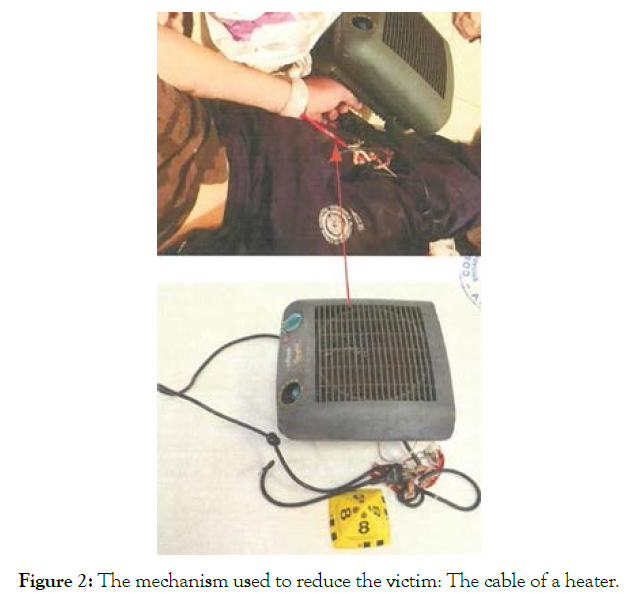
Figure 2: The mechanism used to reduce the victim: The cable of a heater.
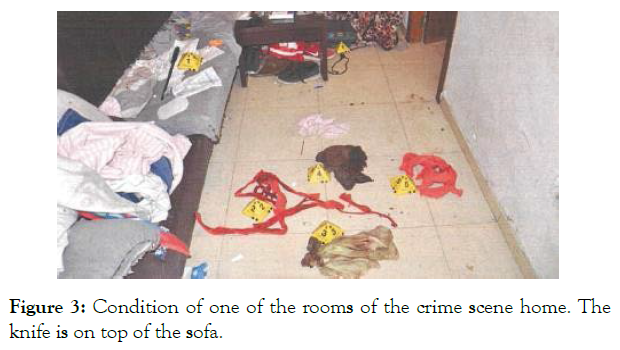
Figure 3: Condition of one of the rooms of the crime scene home. The knife is on top of the sofa.
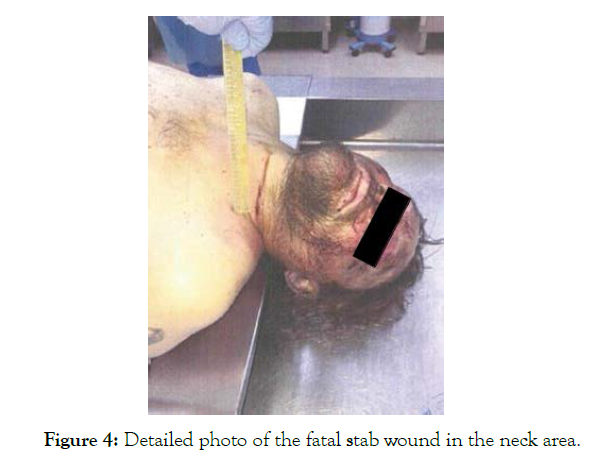
Figure 4: Detailed photo of the fatal stab wound in the neck area.
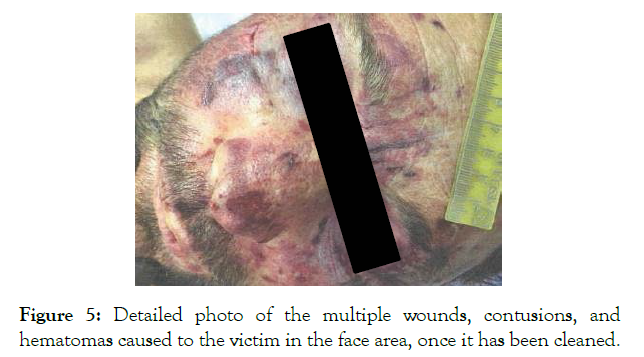
Figure 5: Detailed photo of the multiple wounds, contusions, and hematomas caused to the victim in the face area, once it has been cleaned.
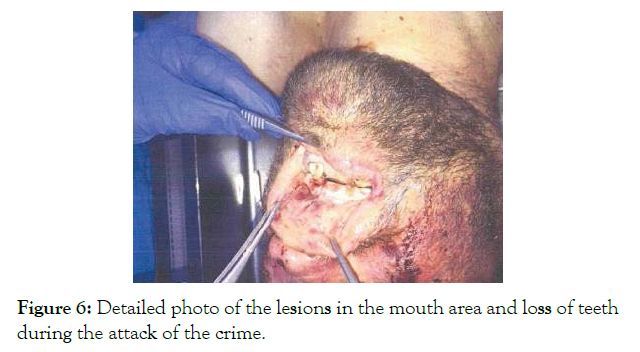
Figure 6: Detailed photo of the lesions in the mouth area and loss of teeth during the attack of the crime.
From the judicial point of view, and following the dictation of the sentence, a perpetrator was declared criminally responsible for a crime of murder, with the concurrence of the very qualified attenuating circumstance of confession, to the principal penalty of ten years and three months of imprisonment.
Regarding the victimizer, the sentence states that she is criminally responsible for the crime of murder, with the concurrence of the highly qualified mitigating circumstance of confession, and the concurrence of the aggravating circumstance of kinship, to the main penalty of twelve years and ten months imprisonment.
From the clinical-psychopathological point of view [8-10], disorganized criminological behaviors respond to an anarchic and random behavior that is compatible with a serious mental disorder (the most common being psychotic). Such behavior is in contrast to organized criminal behavior perpetrated by subjects who do not suffer from any psychic anomaly and are compatible with subjects with psychopathic personality traits (psychopaths, pedophiles).
In cases of subjects with a chronic addictive connection to multiple toxic substances, the mechanisms of behavioral self-control, the ability to tolerate frustration and decision making become fragile and negatively affected by the harmful infiltration of these substances in the brain parenchyma, possibly provoking the origin of disorganized criminal behaviors, as is the case described in the present article.
Citation: Tiffon BN, Fern�¡ndez JG (2021) Cocaine Craving, Desperate Search for Intoxicants, Settling of Scores, and Murder. J Alcohol Drug Depend 9: 361. doi: 10.35248/2329-6488.21.9.361.
Received: 18-Sep-2021 Accepted: 10-Oct-2021 Published: 17-Oct-2021 , DOI: 10.35248/2329-6488.21.9.361
Copyright: �© 2021 Tiffon BN, et al. This is an open-access article distributed under the terms of the Creative Commons Attribution License, which permits unrestricted use, distribution, and reproduction in any medium, provided the original author and source are credited.